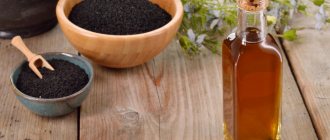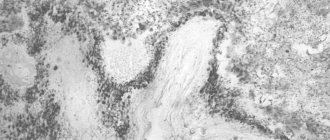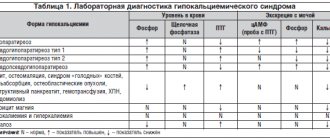The food additive calcium carbonate or “white chalk” is a substance that is most often labeled as E170 dye on food labels. Its main property is to give the product a white color. The substance is of natural origin and is not only harmless, but even beneficial for humans. In this regard, calcium carbonate has found its use in the food industry, in the production of medicines, anti-inflammatory and antacid agents, vitamins and dietary supplements. The only condition is to avoid overdosing on the substance, because in this case it can cause unpleasant symptoms.
Chemical properties
Calcium Carbonate, what is it? This is an inorganic chemical. compound, salt formed by Ca and carbonic acid . Chemical formula of Calcium Carbonate: CaCO3. In nature, the substance can be found in calcite, vaterite, aragonite, marble, limestone, ordinary chalk, and eggshells. This is a fairly common mineral; according to its chemical formula, it has three polymorphic modifications.
In appearance - odorless white crystals or fine powder. The substance is insoluble in water, alcohol, and soluble in dilute nitric and hydrochloric acid (this releases carbon dioxide). According to Wikipedia, molar mass of the substance = 100.1 grams per mole.
Calcium carbonate is made from minerals, mainly marble. In laboratory conditions, the compound can be obtained using the calcination reaction of Ca oxide, resulting in the formation of Ca hydroxide , through which CO2 is passed and carbonate . The chemical properties are characterized by the decomposition reaction of Calcium Carbonate, in which, under the influence of high temperature, the substance is split into quicklime and carbon dioxide. Also, the chemical compound is characterized by a reaction with water and CO2, with the formation of Ca bicarbonate .
The product is used:
- for the production of paint, plastics, household chemicals and rubber;
- as food coloring E170 ;
- in the production of chalk for writing on a blackboard, plastics;
- in whitewashing for trees, ceilings and gardening;
- in the food and paper industries;
- in paper production (bleach, deoxidizer, filler);
- as a source of calcium in the production of tableware, fiberglass, glass products;
- in medicine.
Pharmacodynamics
The antacid effect of calcium carbonate is observed immediately after taking the drug orally. By neutralizing the hydrochloric acid of gastric juice, the substance eliminates heartburn, reduces bloating and seething in the intestines.
The mineral has no effect on the concentration of hydrochloric acid. The antiulcer effect is also associated with a decrease in acidity, which reduces pain and promotes healing of lesions.
Calcium carbonate is a non-absorbable antacid.
Calcium carbonate is a fast-acting symptomatic remedy. Its effect lasts for several hours, but then the secretion of gastric juice is restored and intensified.
The supplement can also be used to replenish calcium deficiency. Additional intake of the mineral stimulates the renewal of bone and tooth tissue and inhibits bone degradation.
Indications for use
Calcium carbonate is prescribed:
- for diseases of the digestive tract with hyperacidity of gastric juice ( gastritis , gastric ulcer , acute duodenitis , symptomatic ulcer of any origin, gastrointestinal erosion heartburn , reflux esophagitis );
- patients with osteoporosis , including during postmenopause ;
- for caries and rickets in childhood;
- patients with osteomalacia and tetany ;
- pregnant women , during breastfeeding;
- during the period of intensive growth of the child;
- with hypocalcemia after long-term treatment with GCs, with renal osteodystrophy , hypoparathyroidism , slow calcium absorption;
- as part of a comprehensive allergy .
Storage conditions and periods
Powdered medical chalk is stored in its original packaging, or packaged in containers made of neutral material with a tight seal. Leave the substance in a dry place, out of reach of children. The optimal storage temperature for edible chalk is +25 °C; refrigeration is not required.
Calcium carbonate powder retains its properties for up to 5 years. Tablet preparations are stored according to the instructions, in accordance with the expiration date of the most perishable ingredient.
Overdose
hyperkacemia may occur (taking more than 2 grams per day). Symptoms: general weakness, headaches , anorexia , lack of appetite, vomiting, constipation , thirst, lethargy, polyuria , pain in the joints and muscles, heart rhythm disturbances, kidney disease.
It is recommended to rinse the stomach, give the victim enterosorbents , and carry out symptomatic treatment.
Contraindications
Strict restrictions on taking calcium carbonate are the following diseases:
- individual intolerance to the drug;
- hypercalcemia, hypercalciuria;
- metastasis to bone tissue;
- myeloma, sarcoidosis;
- overdose of vitamin D;
- severe stages of atherosclerosis;
- renal failure, nephrourolithiasis;
- phenylketonuria;
- danger of thrombosis.
Use powder and tablets with caution if you are prone to constipation, low blood pressure, or insufficient gastric secretion.
Interaction
Combination use of the drug with tetracycline antibiotics can lead to a decrease in their effectiveness and plasma concentration.
When combining the drug with thiazide diuretics, there is a higher risk of developing metabolic alkalosis and hypercalcemia .
Calcium carbonate slows down the absorption processes of other drugs.
of indomethacin increases .
When combined with levothyroxine , it reduces the effect of taking an anabolic steroid.
Cosmetics industry - in which products is the substance found?
White chalk is one of the components of creams, powders and foundations for the face, mattifying lotions, body creams and scrubs, blush, concealers, hair dyes, and children's cosmetics. The substance has the property of absorbing excess sebum, thereby removing oily shine and evening out skin tone. As a thickener and stabilizer, calcium carbonate improves the consistency of cosmetic products, promotes the absorption of excess water and prevents the appearance of lumps. As a weak abrasive component, it cleans and adds shine, which is why it is used in the production of toothpastes. Naturally, the coloring effect of white chalk is also used by manufacturers of cosmetics - with its help they give products a white color.
Drugs containing (Analogs)
Trade names of the product: Calcium carbonate , Vitacalcin , Additiva calcium , Scoralite , UPSAVIT Calcium . In combination with magnesium carbonate : Tums , Rennie , Rumney , Andrews antacid . In combination with colecalciferol, the drug is included in the following medications: Ideos , Revital Calcium D3 , Calcium-D3 Nycomed , Natekal D3 , Complivit calcium D3 . With magnesium hydroxide : Gastrik , Vitrum Mag . Complex products: Alfadol-Sa , Vitrum Beauty Lux , Vitrum Osteomag , Gaviscon , Kalcemin and so on.
Side effects
A rare side effect when using calcium carbonate is an allergic rash and itchy skin. The effects are transient and disappear after discontinuation of the drug. More often, when taking mineral supplements, increased thirst and difficulty with bowel movements are noted. A common consequence of taking an antacid is a secondary increase in secretion several hours after administration.
Calcium carbonate, without foreign impurities or additives, is a neutral, safe substance in prophylactic doses, which very rarely causes individual reactions opposite to those expected: pain in the epigastric region, diarrhea, flatulence.
Reviews
Yana, 33 years old
I am a gynecologist, and I prescribe calcium carbonate to all pregnant women for the proper development and growth of the fetus in the womb. This affordable drug is on the shelves of any pharmacy. It tastes a little unpleasant, but it helps to get rid of the risk of tooth and hair loss for the expectant mother. Do not neglect the medicine.
Vitaly, 29 years old
When I have heartburn, I take CaCO3 or calcium carbonate. I have antacid tablets on hand, which I quickly wash down with water and save myself from unpleasant symptoms. I've been using them for over five years now and have never noticed any side effects. The tablets work quickly, are not addictive, and are available for sale. I recommend everyone try it!
Ivan, 40 years old
My youngest son is growing rapidly, so the doctor advised me to give him extra calcium. This is necessary so that the bones develop proportionally and are not fragile. My wife and I chose the simplest carbonate powder for him - we give it with food so that the child grows without problems. The taste is a little confusing, but my son is already used to it and understands what is needed.
Zinaida, 67 years old
To prevent osteoporosis, the doctor prescribed me calcium carbonate. I obeyed, but did not feel any changes. I went to see another doctor, and he replaced carbonate with citrate, saying that it had a better effect. It seemed so to me, I stopped experiencing pain, plus, as I was told, the risk of developing kidney stones has decreased.
Brief characteristics of calcium carbonate:
Calcium carbonate is a white inorganic substance.
The chemical formula of calcium carbonate is CaCO3.
Calcium carbonate (calcium carbonate) is an inorganic chemical compound, a salt of carbonic acid and calcium.
Practically insoluble in water. Insoluble in ethanol. Easily dissolves in acids with the release of carbon dioxide.
Calcium carbonate decomposes when heated. However, under excess pressure, carbon dioxide (CO2) melts without decomposition.
Calcium carbonate is the main component of sedimentary and rocks (limestone, chalk, marble, dolomite, travertine, aragonite, calcareous tuffs), and is also part of the shells of birds' eggs. Natural reserves of calcium carbonate are enormous; it is a common mineral found on all continents of the Earth. Some of these rocks consist almost entirely of calcium carbonate with minor impurities.
It occurs in three crystalline modifications:
– calcite (limestone, chalk, marble);
– aragonite;
– vaterite or vaterite.
Calcite and aragonite are stable crystalline modifications. Vaterite is the least stable form of calcium carbonate, and very quickly turns into either calcite or aragonite in water. Vaterite is relatively rare in nature.
Registered as white food coloring E170.
Physical properties of calcium carbonate:
| Parameter name: | Meaning: |
| Chemical formula | CaCO3 |
| Synonyms and names in a foreign language | calcium carbonate (English) calcium carbonate (Russian) |
| Type of substance | inorganic |
| Appearance | white trigonal crystals |
| Color | white |
| Taste | no taste |
| Smell | without smell |
| Physical state (at 20 °C and atmospheric pressure 1 atm.) | solid |
| Density of aragonite (state of matter – solid, at 20 °C), kg/m3 | 2830 |
| Density of aragonite (state of matter – solid, at 20 °C), g/cm3 | 2,83 |
| Density of calcite (state of matter – solid, at 20 °C), kg/m3 | 2740 |
| Density of calcite (state of matter – solid, at 20 °C), g/cm3 | 2,74 |
| Decomposition temperature, °C | 900-1000 |
| Melting point of aragonite, °C | 1339 |
| Calcite melting point, °C | 825 |
| Molar mass, g/mol | 100,0869 |
| Solubility in water (25 oС), g/l | 0,013 |
Density of calcium carbonate
Density (calcite) 2.74 g/cm³, (aragonite) 2.83 g/cm³.
Melting point of calcium carbonate
Melting point (calcite) 825° C, (aragonite) 1339° C,
Calcium carbonate decomposition temperature
Decomposition temperature 900-1000° C.
Chemical properties of calcium carbonate. Chemical reactions of calcium carbonate:
Calcium carbonate is a medium salt formed by a strong base (calcium hydroxide Ca(OH)2) and a weak acid (carbonic acid H2CO3).
Aqueous solutions of CaCO3 have a weak alkaline reaction.
The chemical properties of calcium carbonate are similar to those of other metal carbonates.
Chemical properties
When heated to 900-1000 °C, it decomposes into an acidic oxide - carbon dioxide CO2 and a basic oxide - quicklime CaO:
CaCO3 ⟶ CaO + CO2↑ .
It dissolves in water with an excess of carbon dioxide, forming an acidic salt - calcium bicarbonate Ca(HCO3)2:
CaCO3 + CO2 + H2O ⟶ Ca(HCO3)2.
Due to this reaction, stalactites and stalagmites are formed. Natural underground waters, abundant in carbon dioxide, dissolve poorly soluble calcium carbonate with the formation of calcium bicarbonate, which is much better soluble in water; when underground water is released in the form of drops from the ceilings of caves, when it enters the air with a low concentration of carbon dioxide, a reverse reaction occurs, converting calcium bicarbonate into bad soluble precipitate of calcium carbonate that forms beautiful natural shapes in caves, and due to the same mechanism, karst caves are formed.
When fired at temperatures above 1500 °C with carbon, for example in the form of coke, it forms calcium carbide and carbon monoxide:
CaCO3 + 4C ⟶ CaC2 + 3CO↑
| Calcium compounds | |
| |
Biological significance
Calcium carbonate is considered non-toxic. MPC 180 mg/dm³ (in water, with mandatory control for calcium ions). LD50 in rats is about 6400 mg/kg.








